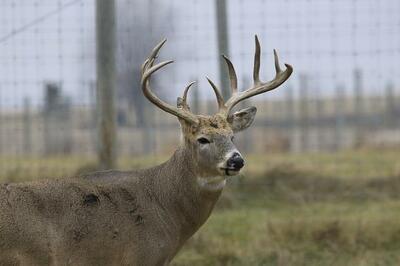DNR Asks Hunters to Help Stop the Spread of CWD
Friday, September 2nd, 2022 -- 9:01 AM

The Wisconsin Department of Natural Resources is asking deer hunters to join in the efforts to protect the state’s deer herd and help slow the spread of chronic wasting disease.
Hunters who have their deer tested for CWD play one of the most important roles in monitoring the health of the deer herd. Each hunting season, hunters who have their deer tested for CWD, properly dispose of deer carcass waste and follow baiting and feeding regulations help the DNR monitor the disease and slow its spread.
When planning their hunt, the DNR encourages hunters to know their county's baiting and feeding restrictions because 58 Wisconsin counties do not allow it. Even where baiting and feeding are allowed, the DNR encourages hunters to reconsider using these practices to reduce the risk for disease transmission.
Large concentrations of animals in one area increase the risk of spreading an infection. CWD is an always-fatal contagious neurological disease that affects the nervous system of deer, elk, moose and caribou. The disease can spread through contact with an infected animal's saliva, urine or feces.
It can also spread indirectly through exposure to a contaminated environment. CWD prions are extremely resilient, and they can stay in the soil for a long time, making containment of an affected area a challenge.
The disease can have an incubation period of over a year, meaning infected deer can appear healthy for several months before showing signs of illness. When symptoms do appear, CWD causes drastic weight loss, drooping of the head and ears, loss of coordination, excessive salivation and no fear of humans.
Testing deer for CWD provides the DNR with valuable data needed to understand the distribution of CWD in the state and keeps hunters informed about the status of their harvest. It is now easier than ever to get a deer tested.
Wisconsin deer hunters can use the CWD form located in their Go Wild harvest history to expedite the process. The form automatically fills in the hunter’s name, contact information, customer ID number and harvest registration number and also makes it easier to pin the deer harvest using an interactive map.
The DNR offers four easy ways to submit a sample:
- Self-service kiosks where hunters can submit their deer’s head for testing;
- A network of cooperating meat processors, taxidermists and other businesses who can assist with CWD sampling;
- By-appointment sampling with the hunter’s local wildlife management DNR staff;
- Kits for hunters to extract lymph node tissue themselves to submit to the DNR for testing.
Once hunters have finished processing their harvested deer, they are reminded to check out their local deer carcass disposal options where they can safely dispose of deer carcass waste. This service is provided in conjunction with many individuals and organizations across the state.
Keeping potentially infected deer off the landscape helps slow the spread of the disease. Hunters can also Adopt-A-Kiosk or Adopt-A-Dumpster to help the DNR expand access to sampling and proper carcass disposal.
While there has never been a documented case of CWD in humans, the Wisconsin Department of Health Services and the Centers for Disease Control recommend against consuming meat from deer that test positive for the disease.
Because infected deer can look healthy, DHS encourages testing for the disease regardless of your harvested deer’s physical condition. CWD testing, proper carcass disposal and following baiting and feeding regulations are three key ways to slow the spread.
The DNR’s guide to slowing the spread of CWD provides even more ways hunters can help. More information about how to prevent the spread of CWD is available on the DNR webpage here.
Feel free to contact us with questions and/or comments.




